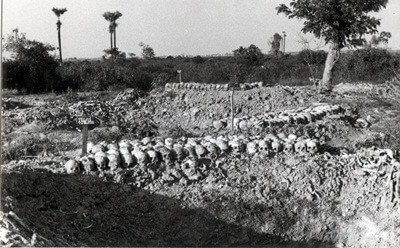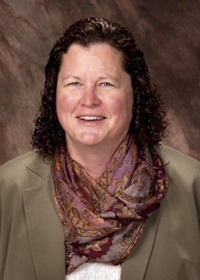A five-year effort to collect the oral histories of Cambodians who survived the Khmer Rouge era and now live in the Chicago area will culminate this week with an exhibit at the Cambodian American Heritage Museum (CAHM) and Killing Fields Memorial in Chicago.
The exhibit resulted from a collaboration between the museum and Northern Illinois University and is “dedicated and focused on the voices of the Killing Fields survivors,” said Dary Mien, executive director of the Cambodian Association of Illinois.
Led by Pol Pot, the infamous leader of the Khmer Rouge, the genocide claimed the lives of about 2 million Cambodians between the years of 1975 and 1979.
The exhibit, “Remembering the Killing Fields,” features archival photographs, historical artifacts, the artwork of contemporary Cambodian artists, oral histories and videotaped interviews with genocide survivors. An opening reception will be held from 5:30 to 8:30 p.m. today (Sept. 15) at the museum, 2831 W. Lawrence Ave.
The opening reception will include guided tours and keynote addresses from Richard Hirschhaut, executive director of the Illinois Holocaust Museum and Education Center, and journalist Elizabeth Becker, a former Washington Post foreign correspondent and author of the book, “When the War Was Over” (1986), a history of Cambodia and the Khmer Rouge.
“This exhibit is particularly timely with the Khmer Rouge tribunal going on right now,” NIU Anthropology Professor Judy Ledgerwood said. “Just about every Cambodian who lived through the Khmer Rouge regime has his or her own personal stories. But these people are aging, so there’s a sense of urgency to telling the story now.”
Ledgerwood, a cultural anthropologist, and Ann Wright-Parsons, who formerly headed the NIU Anthropology Museum, directed the oral histories project. They had assistance from more than a dozen NIU students who interviewed survivors on audiotape and later videotape, read through hundreds of pages of transcripts, indexed the material and helped identify exhibit themes.
“There are amazing stories,” Ledgerwood said.
She recalled how one survivor recounts helping organize a group that escaped and hid in the jungle for more than a year. Another woman tells how she became resigned to defying the Khmer Rouge after learning her two children had died on the same day. Another couple tells of their escape from death via a fishing boat.
“For some of the students, it was very difficult to hear these stories,” Ledgerwood said. “I’ve been doing research on Cambodian society for more than 20 years. For many of the students, however, it was the first time they had heard anyone talking about this terrible suffering, hunger and violence.”
“People survived the unthinkable,” said Lauren Bell of Mundelein, an NIU graduate student.
Her experiences two years ago videotaping one survivor and reading the transcripts of others brought to life what she had learned in textbooks and helped her decide to focus on Cambodian studies. She traveled to the country on a foreign languages fellowship this past summer.
“You can read books all day, but you’ll never understand what people went through and the intense emotions,” Bell said, adding that the first-hand accounts from survivors provide “a completely different perspective.”
NIU senior anthropology major Mike Gronli of Barrington agreed.
“It was profoundly touching in a lot of ways,” he said. “It definitely made me reflect on things that I’ve experienced in my own life; it made me think about the things I take for granted.”
Supported by grants to NIU from the Henry Luce Foundation in New York, the new exhibit is designed to complement the Cambodian American Heritage Museum’s existing Killing Fields Memorial. That memorial is comprised of 80 glass columns, each representing 25,000 lives lost in the killing fields, a term popularized by a 1984 movie on the topic.
The names of about 1,500 victims, most of whom were relatives and friends of Cambodians now living in Illinois, are etched on the glass columns.
“Remembering the Killing Fields” can be viewed on weekdays from 9 a.m. to 4 p.m. and by appointment on weekends. Advanced reservations are appreciated. To schedule a personal or group viewing, please contact Anneth Houy, Khmer arts & culture coordinator, at (773) 980-4654 or anneth@cambodian-association.org.
Related:
NIU, Chicago museum will document stories from survivors of Cambodia’s ‘killing fields’


